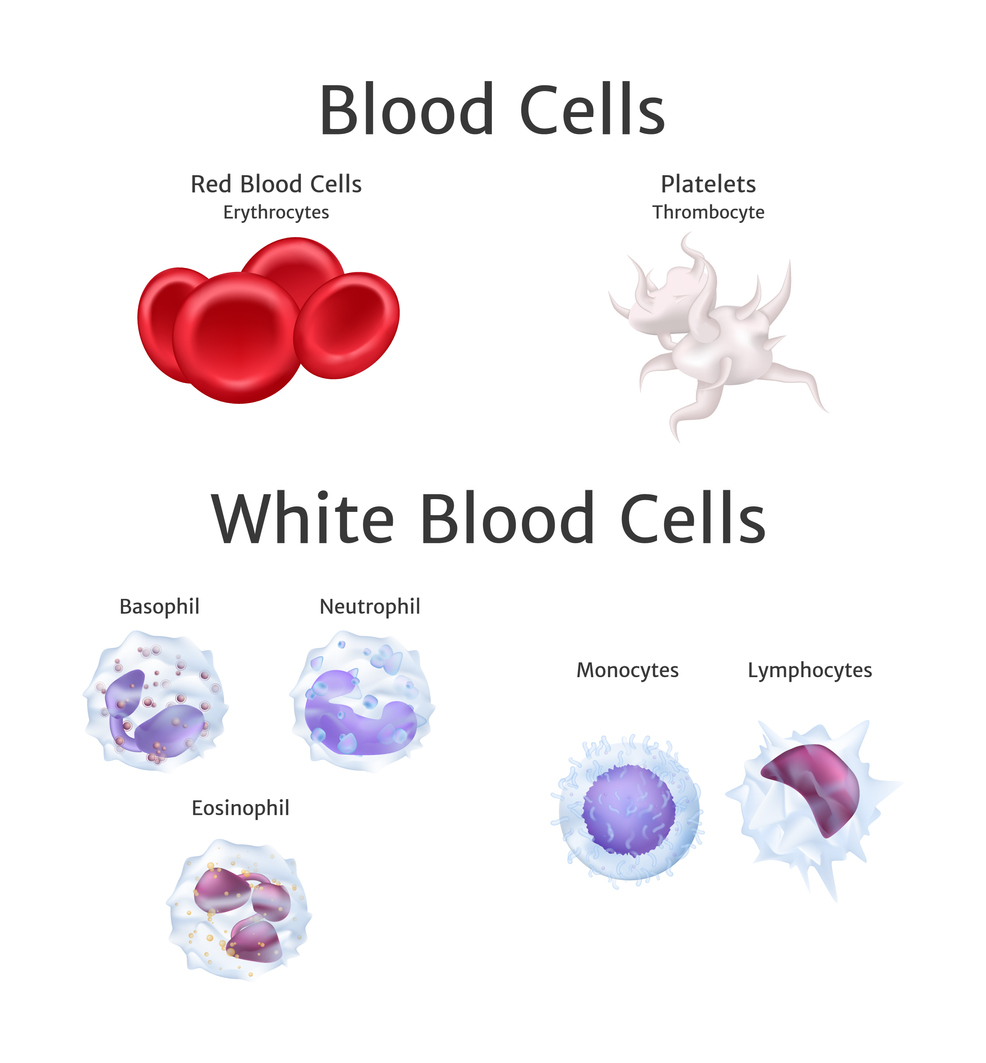Full Blood Count
Your blood is of red blood cells, white blood cells, platelets and plasma.
A full blood count (also known as complete blood count) looks at all these components.

RED BLOOD CELLS (ERYTHROCYTES)
Accronym on lab form: RBC
Red Blood Cells carry oxygen from lungs to all the body tissues and then carbon dioxide (the waste product of metabolism) to lungs for expulsion into the air.
HAEMOGLOBIN
on lab form: Haemoglobin
Haemoglobin is found in your red blood cells and gives the blood the red colour. It is the haemoglobin that carries the oxygen in your blood.
HEMOTOCRIT
on lab form: Hct
This is the portion of your blood that is red blood cells.
MEAN CELL VOLUME
on the lab form: MCV
This is a measure of the size of your red blood cells
PLATELETS
On lab form: Platelets
These are the cells that clot together to stop you from bleeding when you cut yourself.
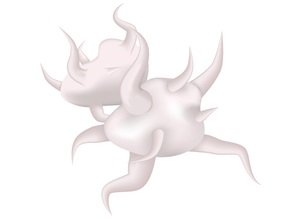
White Blood Cells
On the lab form: WBC
This is the total number of all the components of the white blood cells added together. White Blood Cells are made of Neutrophils, Lymphocytes, Monocytes, Eisonophils and Basophils.
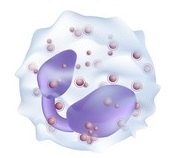
NEUTROPHIL
On the lab form: Neutrophil
Neutrophils make 40% to 70% of the white blood cells. They help fight against infection, help against inflammation, breakdown and eat up bacteria. They also help with the healing of damaged tissues.
LYMPHOCYTES
On the lab form: Lymphocytes
These make 2-% to 40% of the white blood cells. There are two types: B cells and T cells. B cells produce antibodies that attack invading bacteria, viruses and toxins. The T cells destroys the body's own cells that have been taken over by the virus or that have become cancerous.
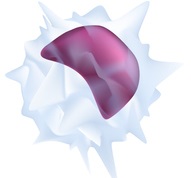
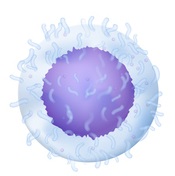
MONOCYTES
On the lab form: Monocytes
These make up to 1% to 10% of white blood cells. Monocytes within few hours of production travel to tissues and organs. They stick to tissues there and become macrophages or dendritic cells. Macrophages remove dead cells, kill cancer cells and regulate body's immunity against foreign bodies.
Dendritic cells present left over broken down bacteria, cells, germs etc to T cells. The T cells then formulates a plan to destroy these invaders.
EISONOPHIL
on lab form: Eisonophils
These are specialised component of white blood cells that fight against disease. They are also involved with allergic reactions and parasitic infections. The details of how eosinophil work and their role in immunity is not still fully understood.
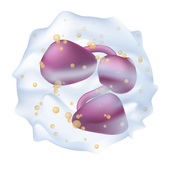
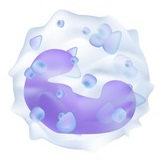
BASOPHIL
On lab form: Basophils
They make 0.1% to 1% of the white blood cells. They are a type of white blood cells who are responsible for fighting bacteria, viruses and infections. They are a granulocyte which means that they release enzymes as part of their immune response. Basophils release two enzymes called histamine and heparin.
UNDERSTANDING WHAT THESE COMPONENTS REPRESENT IS IMPORTANT PART OF UNDERSTANDING YOUR NATURAL DEFENCE SYSTEM
Some research shows that specific nutrients can affect specific components of the blood cells. Thus the results of a full blood count helps in fine tuning the nutrient requires that can affect your immune system.
